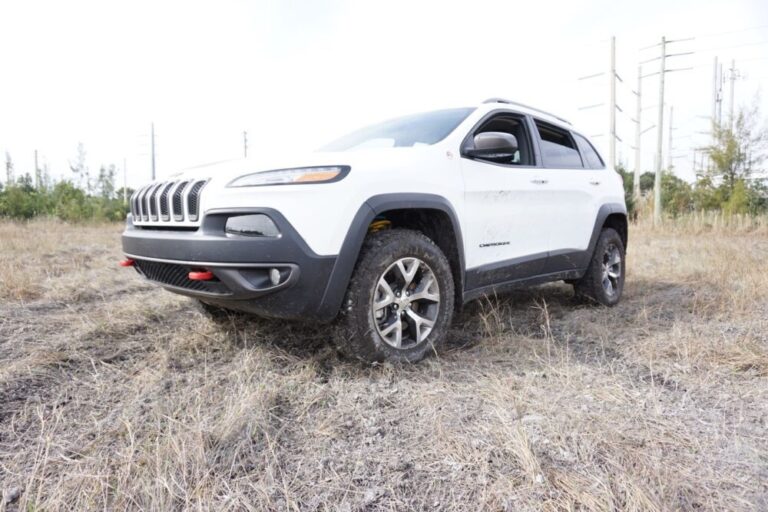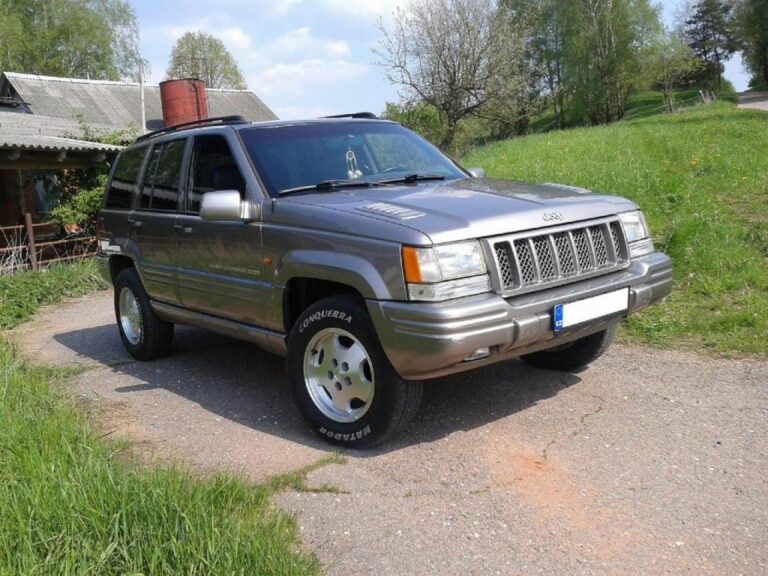OEM Backup Sensors On A 2014 Jeep JK For Sale: A Comprehensive Guide to Enhanced Safety and Convenience
OEM Backup Sensors On A 2014 Jeep JK For Sale: A Comprehensive Guide to Enhanced Safety and Convenience jeeps.truckstrend.com
The 2014 Jeep Wrangler JK, a beloved icon of off-road prowess and rugged adventure, is known for its go-anywhere capability. However, its classic design, including the rear-mounted spare tire and tall stance, can present challenges when maneuvering in tight spaces or backing up. This is where OEM (Original Equipment Manufacturer) backup sensors become invaluable. These factory-installed proximity sensors are designed to provide an extra layer of safety and convenience, alerting drivers to obstacles behind the vehicle and significantly reducing the risk of costly collisions or dangerous accidents.
For anyone looking to purchase a 2014 Jeep JK, or for current owners considering an upgrade, understanding the role, benefits, and intricacies of OEM backup sensors is crucial. This article will serve as a detailed guide, exploring everything from how these sensors work to what to look for when buying a JK equipped with them, and even the considerations for retrofitting them.
OEM Backup Sensors On A 2014 Jeep JK For Sale: A Comprehensive Guide to Enhanced Safety and Convenience
Understanding OEM Backup Sensors on a Jeep JK
OEM backup sensors, also known as parking sensors or park assist systems, are integrated into the rear bumper of the vehicle. On a 2014 Jeep JK, these sensors typically use ultrasonic technology to detect objects in the vehicle’s immediate rearward path.
How They Work:
When the driver shifts the Jeep into reverse, the sensors emit high-frequency ultrasonic waves. These waves bounce off any obstacles (such as other vehicles, walls, poles, or even children and pets) and return to the sensors. The system then calculates the distance to the object based on the time it takes for the waves to return. As the Jeep gets closer to an object, the system provides an audible warning – usually a series of beeps that increase in frequency until they become a continuous tone when the object is very close. Some OEM systems may also provide visual cues on the vehicle’s instrument cluster (EVIC – Electronic Vehicle Information Center) or infotainment screen, showing the proximity to the detected object.
Typical Placement:
On a 2014 Jeep JK, you’ll typically find four small, circular, flush-mounted sensors evenly spaced across the rear bumper fascia. Their discrete placement ensures they blend seamlessly with the vehicle’s rugged aesthetic while providing comprehensive coverage of the rear blind spots.
Why OEM Matters for a 2014 Jeep JK
While aftermarket backup sensor kits are widely available, opting for OEM sensors, or a JK that came equipped with them, offers several distinct advantages, particularly for a vehicle like the Jeep JK:

- Seamless Integration: OEM sensors are designed specifically for the JK’s electrical system, body structure, and internal modules. This means they integrate flawlessly with the existing wiring, dashboard displays, and vehicle controls. There are no dangling wires, unsightly add-ons, or compatibility issues.
- Reliability and Accuracy: Factory-installed sensors undergo rigorous testing to ensure consistent and accurate performance. They are less prone to false alarms caused by environmental factors (like rain or snow) or electromagnetic interference, which can sometimes plague less sophisticated aftermarket systems.
- Durability: Jeep JKs are built for adventure, and their components need to withstand challenging conditions. OEM sensors are constructed from durable materials designed to endure off-road vibrations, exposure to dirt, mud, water, and extreme temperatures, maintaining functionality where aftermarket options might fail.
- Aesthetics and Resale Value: OEM sensors are flush-mounted and painted to match the bumper, preserving the vehicle’s factory look. For a 2014 JK for sale, having factory-installed backup sensors can be a significant selling point, signaling a well-equipped and well-maintained vehicle, potentially increasing its resale value.
- Safety Standards: OEM systems are designed to meet stringent automotive safety standards, providing a reliable safety net that aftermarket solutions may not always replicate.

Benefits of Having OEM Backup Sensors on Your JK
The advantages of having OEM backup sensors on your 2014 Jeep JK extend beyond mere convenience:
- Enhanced Safety: The primary benefit is preventing collisions. Backing up, especially in a vehicle with a high rear profile and a spare tire that obstructs the view, can be risky. Sensors significantly reduce the chances of hitting unseen obstacles, other vehicles, or, most critically, pedestrians, children, or pets.
- Parking Ease: Navigating tight parking spots, parallel parking, or maneuvering in crowded urban environments becomes much less stressful. The audible alerts guide you precisely, allowing you to park with confidence and avoid minor dents and scratches.
- Protecting Your Investment: Even minor rear-end collisions can lead to costly repairs for bumpers, tailgates, or even frame damage. Backup sensors act as an early warning system, helping you avoid these expenses and keep your JK in pristine condition.
- Peace of Mind: Knowing you have an extra set of "eyes" (or rather, "ears") watching your back provides peace of mind, whether you’re backing out of a driveway, a busy parking lot, or navigating a tricky trail.
- Integration with Other Features: If your 2014 JK is equipped with the Uconnect infotainment system or a rearview camera (which was an optional add-on or aftermarket modification for the 2014 JK), the OEM sensors often integrate seamlessly, providing a comprehensive parking assistance experience.

Identifying and Verifying OEM Sensors on a 2014 JK For Sale
When you’re browsing 2014 Jeep JKs for sale and the listing mentions "backup sensors," it’s crucial to verify if they are indeed OEM or aftermarket.
-
Visual Inspection:
- Placement: OEM sensors are almost always integrated into the rear bumper fascia itself, appearing as small, circular, flush-mounted discs. They will typically be painted to match the bumper color.
- Appearance: Aftermarket sensors might look less integrated, sometimes appearing as surface-mounted pods, or if flush-mounted, they might be in slightly different positions or have a different finish.
- Wiring: If you can peek under the bumper, look for clean, factory-routed wiring harnesses that disappear into the vehicle’s body. Aftermarket installations might show more visible wiring or less professional routing.
-
Dash Integration:
- Buttons: Check the dashboard for a dedicated "Park Assist" or "P" button, often located near the climate controls or infotainment screen. This button allows you to manually activate or deactivate the sensors.
- Display: Put the vehicle in reverse. Does the EVIC (the small screen in the instrument cluster) show a visual representation of the rear of the vehicle with proximity bars, or does the Uconnect screen display similar graphics? This is a strong indicator of an OEM system. Aftermarket systems usually have a separate, often smaller, display unit mounted on the dashboard or rearview mirror.
-
VIN Check/Build Sheet:
- The most definitive way to confirm OEM features is to get the vehicle’s VIN (Vehicle Identification Number). Many online services (some free, some paid) allow you to enter the VIN and retrieve the original factory build sheet, which lists every option and package the vehicle came with from the factory. Look for options like "ParkSense Rear Park Assist System."
- Ask the seller for the original window sticker or a copy of the build sheet.
-
Test Drive:
- Always test the sensors. With the vehicle in reverse, slowly approach an object (e.g., a wall, another car in a safe, open area). Listen for the audible beeps and observe any visual cues on the dash. Ensure the beeping frequency increases consistently as you get closer to the obstacle.
Installation/Retrofitting OEM Sensors on a 2014 JK (If Not Equipped)
If you own a 2014 Jeep JK that didn’t come with OEM backup sensors, retrofitting them can be a challenging but rewarding project. It’s important to understand that adding a true, fully integrated OEM system is significantly more complex and costly than installing an aftermarket kit.
Components Typically Needed:
- OEM Sensors: Four individual sensors designed for the JK.
- OEM Wiring Harness: Specific harness that connects the sensors to the control module.
- OEM Park Assist Module (PAM): The electronic brain that processes sensor data.
- OEM Buzzer/Speaker: For the audible alerts.
- Replacement Rear Bumper Fascia: If your current bumper doesn’t have the pre-drilled holes for the sensors.
- New Dashboard Switch: To control the system.
Process Overview (Highly Simplified):
- Bumper Modification/Replacement: Install sensors into the bumper (requires precise drilling if reusing the original bumper).
- Wiring: Route the sensor wiring harness through the vehicle to connect to the Park Assist Module. This often involves removing interior trim panels.
- Module Installation: Mount the PAM in its designated factory location (often behind interior trim).
- Integration: Connect the PAM to the vehicle’s CAN-bus (Controller Area Network) system. This is where professional expertise is almost always required.
- Programming: The new module and sensors will need to be "flashed" or programmed by a dealership or a shop with advanced diagnostic tools (like a WiTech or similar Chrysler-specific scanner). This step activates the feature in the vehicle’s computer system and enables dashboard integration.
Challenges and Recommendations:
- Cost: Sourcing all individual OEM components can be expensive.
- Complexity: The wiring, module installation, and especially the programming, require specialized knowledge and tools. It’s not a plug-and-play operation.
- Labor: Expect significant labor costs if you hire a professional.
- Recommendation: For true OEM integration, professional installation by a certified Jeep technician or a reputable automotive electronics specialist is highly recommended. Attempting a DIY installation without the right tools and knowledge can lead to electrical issues or non-functional systems. Many choose high-quality aftermarket kits that mimic OEM appearance and function but are easier to install for a fraction of the cost.
Maintaining Your OEM Backup Sensors
Once you have a 2014 Jeep JK with OEM backup sensors, a little maintenance goes a long way to ensure their longevity and reliable performance:
- Keep Them Clean: Dirt, mud, snow, ice, and even heavy rain can temporarily obstruct the sensors, leading to false alarms or no detection. Regularly wipe them clean with a soft cloth and mild soap and water.
- Inspect for Damage: After off-roading or any minor bumps, visually inspect the sensors for cracks, dislodgement, or any physical damage. A damaged sensor will likely malfunction.
- Avoid Painting Over Them: If you ever need to repaint your bumper, ensure the sensors are removed or carefully masked. Painting over them can interfere with their ultrasonic waves and render them inoperable.
- Check Connections: If you experience intermittent issues, a loose wiring connection behind the bumper or at the module could be the culprit. This is usually best left to a professional to check.
Common Issues and Troubleshooting
Even OEM systems can encounter issues. Here are some common problems and potential solutions:
- False Alarms: Often caused by dirt, mud, or snow accumulating on the sensors. Cleaning them usually resolves this. Heavy rain or car washes can also trigger temporary false alarms.
- No Alerts/System Malfunction Light: This could indicate a damaged sensor, a faulty wiring harness, a module failure, or a programming issue. Check for obvious physical damage first. If none, professional diagnosis is required.
- Intermittent Operation: Can be due to a loose connection, a partially damaged sensor, or environmental interference.
- Solution Steps:
- Clean the sensors thoroughly.
- Inspect for visible damage.
- Check the vehicle’s owner’s manual for specific troubleshooting steps or reset procedures.
- If problems persist, seek professional diagnosis from a Jeep dealership or a qualified automotive electrician.
Estimated Costs for OEM-Style Backup Sensor Components/Installation for a 2014 Jeep JK
It’s important to note that purchasing a complete "OEM kit" for retrofitting is rare. Most often, you’d source individual OEM components or opt for a high-quality aftermarket kit designed to mimic OEM functionality and appearance. Prices are estimates and can vary widely based on supplier, condition (new/used), and labor rates.
| Item/Service | Description | Estimated Price Range (USD) | Notes |
|---|---|---|---|
| Individual OEM Sensor | Genuine Mopar sensor for JK (per sensor, 4 needed) | $50 – $150 | Can vary greatly by specific part number and seller. |
| OEM Wiring Harness | Factory harness connecting sensors to module | $100 – $300 | Crucial for proper integration; often hard to find separately. |
| OEM Park Assist Module (PAM) | Electronic control unit for the system | $200 – $500 | May require specific part number matching your JK’s trim/features. |
| OEM Bumper Fascia (with sensor holes) | New rear bumper cover pre-drilled for sensors (if needed) | $300 – $800 | If your current bumper doesn’t have sensor cutouts. Painting costs extra. |
| Dealer Programming/Flash | Required to activate the system in the JK’s computer | $150 – $300 | Non-negotiable for true OEM functionality. |
| High-Quality Aftermarket Kit | Kit designed to look and function like OEM, with sensors, module, wiring. | $150 – $400 | Easier to install, often doesn’t require dealer programming, but may lack full dash integration. |
| Professional Installation Labor | For full OEM retrofit (complex wiring, module, bumper work, programming prep) | $400 – $800+ | Highly variable by shop and complexity. Excludes parts. |
| Professional Installation Labor (Aftermarket) | For a typical aftermarket kit (simpler wiring, no programming) | $150 – $350 | Significantly less complex than full OEM retrofit. |
Note: The total cost for a full OEM retrofit (parts + labor + programming) could easily exceed $1000-$2000, making a high-quality aftermarket kit a more practical solution for many existing JK owners.
Frequently Asked Questions (FAQ)
Q1: Can I add OEM sensors to my 2014 JK if it didn’t come with them from the factory?
A1: Yes, it is technically possible, but it is a complex and potentially expensive undertaking. It requires sourcing genuine OEM parts (sensors, wiring harness, control module, potentially a new bumper fascia) and, critically, dealer-level programming to activate the feature in your JK’s computer system. Professional installation is highly recommended.
Q2: Are aftermarket backup sensors as good as OEM for a Jeep JK?
A2: Modern aftermarket kits have come a long way, with many offering reliable performance and a near-OEM appearance. However, true OEM systems generally offer superior integration with the vehicle’s existing electronics (dashboard displays, dedicated buttons) and are built to the manufacturer’s durability standards, which can be beneficial for a vehicle like the JK. For most users, a good quality aftermarket kit provides excellent value.
Q3: How do I know if a 2014 Jeep JK for sale has OEM sensors or aftermarket ones?
A3: Look for flush-mounted sensors painted to match the bumper. Check the dashboard for a dedicated "Park Assist" button and observe if the instrument cluster or infotainment screen shows visual proximity indicators when in reverse. The most reliable method is to get the VIN and check the vehicle’s factory build sheet for the "ParkSense Rear Park Assist System" option.
Q4: What commonly causes backup sensors to malfunction?
A4: The most common causes are dirt, mud, snow, or ice covering the sensors. Physical damage to a sensor (e.g., from a minor impact or off-roading) or a loose/damaged wiring connection can also cause malfunctions. Less common are issues with the control module itself.
Q5: Do aftermarket or heavy-duty off-road bumpers affect sensor performance?
A5: Yes, they often do. Many aftermarket off-road bumpers are not designed with sensor cutouts, or their material/design can interfere with sensor operation. If you install an aftermarket bumper, you may need to either relocate the sensors, use specific sensor-compatible bumpers, or accept that the sensors may no longer function correctly. Some heavy-duty bumpers offer specific provisions for factory sensors.
Q6: Is it worth the cost to retrofit OEM sensors on an older JK?
A6: For most owners, the high cost and complexity of a full OEM retrofit make a high-quality aftermarket kit a more practical and cost-effective solution. If seamless factory integration is paramount and budget isn’t a concern, then an OEM retrofit might be considered, but be prepared for the investment.
Conclusion
For anyone considering a 2014 Jeep JK for sale, or for current owners looking to enhance their vehicle’s safety, OEM backup sensors represent a valuable feature. They provide crucial assistance in navigating the inherent blind spots of the Wrangler JK, making parking and reversing significantly safer and less stressful. While identifying truly OEM sensors on a pre-owned vehicle requires careful inspection and verification, their integration, reliability, and durability are unparalleled. For those looking to add this feature to their existing JK, understanding the complexities of OEM retrofitting versus the practicality of quality aftermarket solutions is key. Ultimately, investing in a reliable backup sensing system, whether factory-installed or a well-chosen aftermarket alternative, is a smart decision that enhances both the safety and the overall enjoyment of your iconic Jeep JK.






